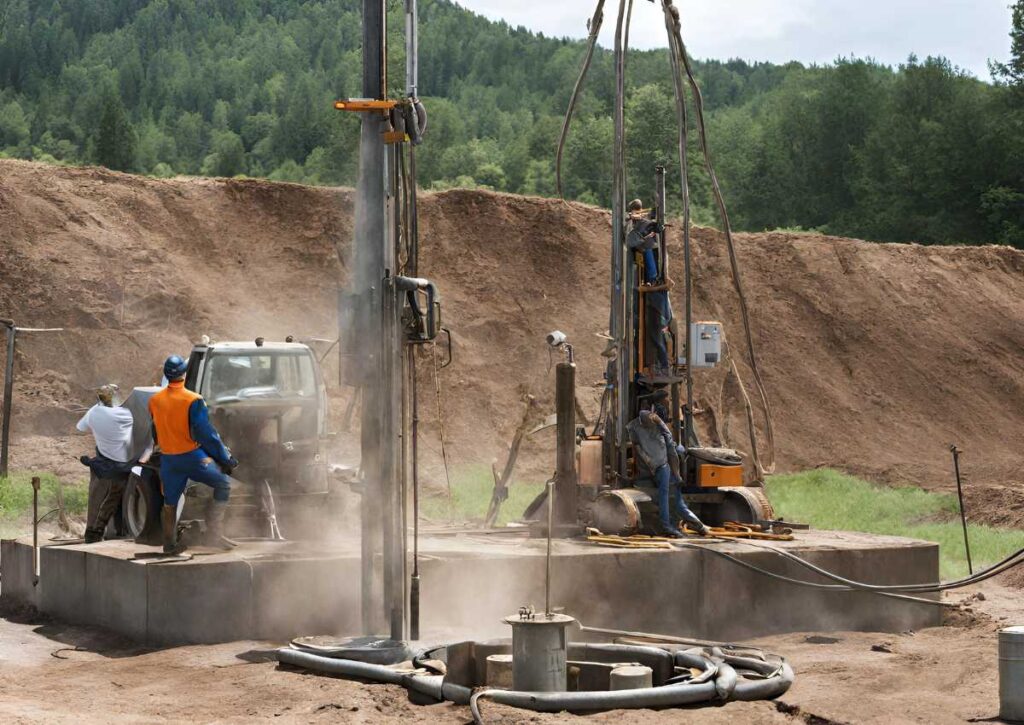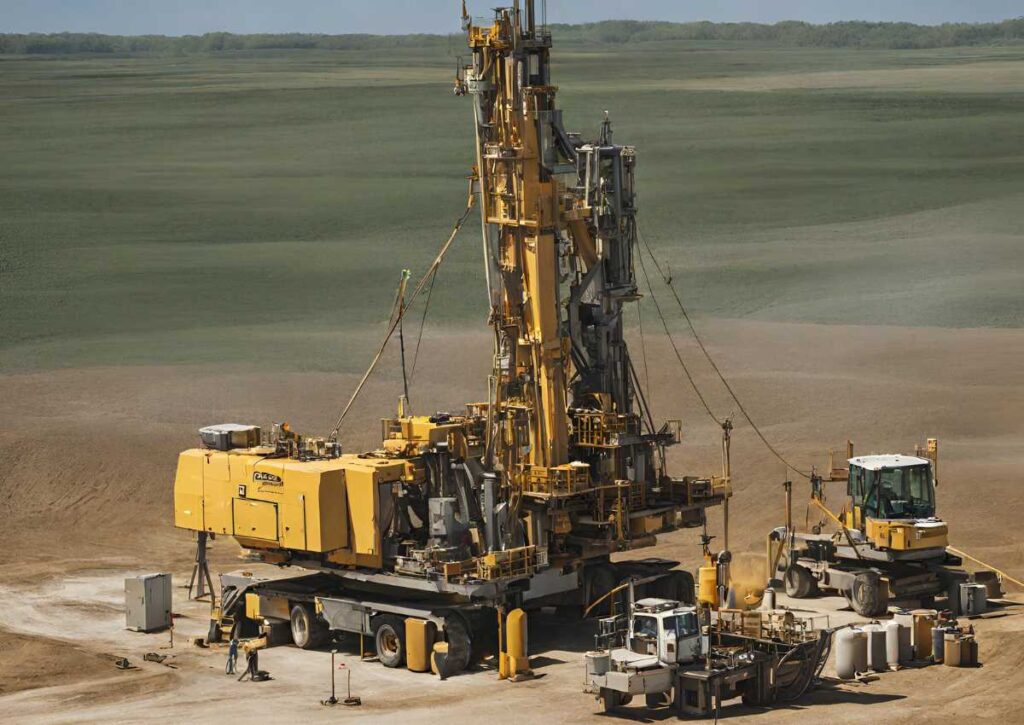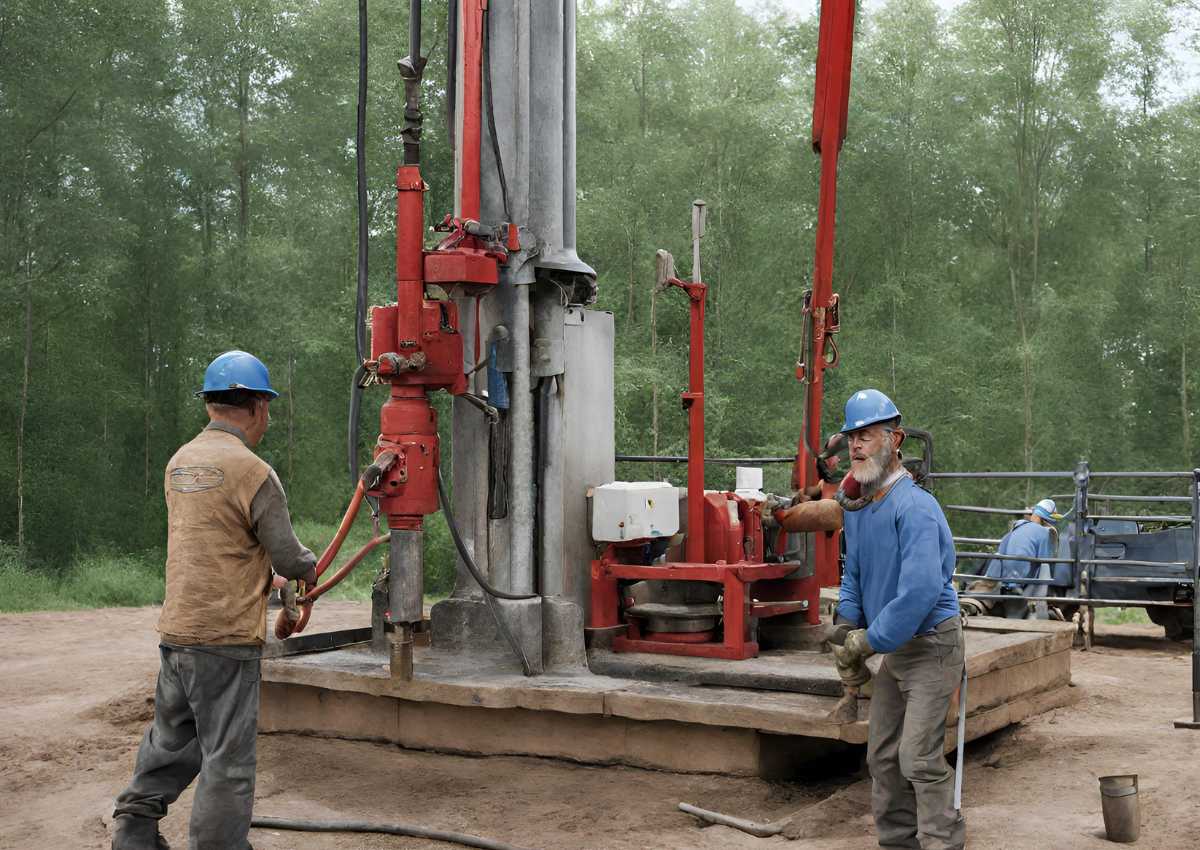Water is a fundamental resource in our everyday existence, and having reliable access to it is paramount.
However, only some have access to a reliable source of water, which is where drilling a well comes in. If you’re considering drilling a well, you’re likely wondering about the cost.
How Much Does it Cost to Drill a Well? The cost of drilling a well can vary widely depending on location, depth, and local drilling rates.
However, drilling a water well can range from $5,000 to $15,000 or more on average.
In this blog, we’ll delve into the intricacies of drilling a well, shedding light on the diverse factors that influence its cost.
Understanding these variables will empower you to make a well-informed choice regarding your water requirements.
Types of wells
When drilling a well, there are several types of wells to choose from, each with unique benefits and costs.
The type of well you choose will depend on factors such as your location, the purpose of the well, and your budget.
Now, we’ll explore the different types of wells and their associated costs so you can decide which type of well is right for you.
We’ll cover everything from traditional dug wells to modern drilled wells. So, let’s dive in and explore the world of well drilling!
Dug wells
Dug wells stand out as the most budget-friendly option for homeowners. These wells are crafted through manual excavation, digging into the ground until the water table is reached.
The overall cost of drilling a well fluctuates based on factors like the well’s depth and the composition of the soil or rock being dug through.
On average, a dug well can cost anywhere from $500 to $3,000 to construct, but the ongoing maintenance costs are generally low.
It’s important to note that dug wells may not be suitable in areas with high water demand or poor water quality.
Driven wells
Driven wells represent a type of well formation achieved by inserting a small-diameter pipe into the ground until it accesses a water table.
The expense associated with drilling a driven well can fluctuate depending on factors like the location and depth of the water table. Typically, the cost falls between $2,000 to $4,000.
These wells are relatively shallow and can provide water for household use and irrigation but may not be suitable for drinking water due to potential contamination from surface water sources.
It’s essential to consult with a professional well driller to determine whether a driven well is viable for your specific needs and location.
Drilled wells
Drilled wells, a category of water wells, are established by boring a hole into the ground using a drilling rig.
The expense associated with drilling such wells is influenced by various factors, including the well’s depth, location, and the type of well in question.
Typically, drilled wells tend to be pricier than other well types, with costs spanning from several thousand dollars to potentially reaching tens of thousands.
Well-drilling methods

Drilling a well encompasses a range of methods, and the choice often hinges on factors like the location, the area’s geological characteristics, and the water table’s depth.
Each technique has its own advantages and drawbacks, and the selection can significantly influence the project’s overall cost.
Cable tool drilling
Cable tool drilling, also known as percussion drilling, is a conventional method for drilling wells. In this process, a hefty drill bit is repeatedly lifted and dropped to fracture rock formations.
While it may be slower in pace than specific other drilling methods, it is often more cost-effective and adaptable for use in diverse geological settings.
Rotary drilling
Rotary drilling is a standard method used to drill wells, and it involves rotating a drill bit while simultaneously pumping drilling fluid into the borehole to flush out the rock cuttings.
This method is ideal for drilling through complex formations such as rock, and the cost of drilling a well using this method can vary depending on factors such as the depth of the well and the equipment used.
Air-rotary drilling
Air rotary drilling is a method of drilling a well that involves using compressed air to circulate drilling fluids and cuttings out of the hole.
This method is often used in areas with hard rock formations or when digging through dense soil layers.
The cost of air rotary drilling can vary depending on factors such as the depth of the well, the type of rock or soil being drilled, and the location of the well site.
It is considered more expensive than other methods, such as cable tool drilling or mud rotary drilling.
Reverse circulation drilling
Reverse circulation drilling is a well-drilling method for mineral exploration and geothermal drilling.
It involves drilling a borehole using a drill bit and drilling fluid pumped down through the centre of the drill pipe.
The drilling fluid then circulates back up outside the drill pipe, carrying rock cuttings and other debris.
This method is faster and more efficient than other drilling methods, but it can also be more expensive due to the equipment and specialized expertise required.
Auger drilling
Auger drilling is a well-drilling method that uses a sizeable helical drill bit to bore into the ground. It is a cost-effective method for shallow wells up to 50 feet deep.
Auger drilling can cost anywhere from $10 to $50 per foot, depending on the area’s geology, the depth of the well, and other factors such as the availability of drilling equipment and labour costs.
Factors affecting well-drilling costs

When it comes to drilling a well, a multitude of factors can impact the overall cost.
From the depth of the well to the type of equipment used, each aspect of the drilling process can play a role in determining the final price tag.
Depth of the well
The depth of a well is one of the most pivotal factors influencing the cost of drilling. The deeper the well, the higher the associated drilling expenses.
Moreover, the well’s depth dictates the size and type of equipment essential for the drilling process, further impacting the overall cost.
Geological conditions
When drilling a well, geological conditions can significantly impact the overall cost.
The type of soil or rock formations present in the area where the well will be drilled can affect the drilling time, equipment needed, and overall complexity of the project.
For example, drilling through hard rock can require more specialized equipment and can take longer, resulting in higher costs.
The depth at which the well needs to be drilled can also impact the cost. Overall, the geological conditions of the drilling site play a significant role in determining the cost of well drilling.
Location and accessibility
When it comes to drilling a well, the location and accessibility of the site can significantly impact the project’s overall cost.
Factors such as the site’s distance from the nearest road, the terrain of the area, and any obstacles that may hinder access to the site can all influence the cost of drilling a well.
Drilling method
The drilling method used for a well can significantly impact the project’s overall cost. Several different drilling methods include cable tool drilling, rotary drilling, and directional drilling.
Cable tool drilling is an older and less common method that involves repeatedly dropping a heavy drill bit onto the ground to break up rock and soil.
On the other hand, rotary drilling is a more modern and efficient method that involves using a rotating drill bit to bore into the ground.
Permitting and regulations
When drilling a well, obtaining the necessary permits and complying with regulations can significantly impact the project’s overall cost.
Permitting requirements and fees can vary depending on the well’s location and depth and the type of drilling method used.
Estimating well-drilling costs

When contemplating drilling a well for your residence or business, cost is crucial.
Drilling a well constitutes a substantial investment, and the total expense hinges on multiple variables, encompassing the well’s depth, specific type, and geographical location.
Careful consideration of these factors is vital to making an informed decision regarding your project.
Initial assessment and site evaluation
Before drilling a well, an initial assessment and site evaluation are necessary to determine the feasibility of drilling and estimate the cost.
Factors that are evaluated include the water demand, location, geological formation, and availability of equipment and personnel.
A qualified professional can conduct this assessment and provide a detailed report that outlines the estimated costs and the drilling process.
This step is essential to ensuring the drilling project is feasible and cost-effective.
Drilling contractor quotes
The section with the heading “Drilling contractor quotes” in an article about estimating well-drilling costs would likely cover the process of obtaining quotes from drilling contractors and what factors may affect the price of those quotes.
This could include information on the importance of getting multiple quotes, what information the contractor may need to provide an accurate quote, and what variables may impact the final cost, such as the depth and location of the well, the type of drilling equipment used, and any services needed, like well casing or pump installation.
Additional expenses to consider
When estimating the cost of drilling a well, it’s essential to consider the expenses that may arise beyond the initial drilling process.
These expenses include permits, site preparation, casing and cementing, pump installation, and water treatment systems.
Maximizing the value of your well
One of the biggest concerns for homeowners and property owners when drilling a well is the cost.
However, drilling a well is an investment in your property that can provide many long-term benefits, from a reliable source of clean water to increased property value.
Maximizing the value of your well means finding the right balance between cost and quality so that you can enjoy the benefits of your investment for years to come.
Proper well construction and sealing
Proper well construction and sealing are essential for maximizing the value of your well.
It involves drilling the well to the appropriate depth and installing a casing and screen to prevent contaminants from entering the well.
Sealing the well helps to ensure that the water remains clean and free from contamination.
This process can be costly, but investing in a well-built, adequately sealed well is essential to ensuring its longevity and preventing potential health hazards.
Routine maintenance and monitoring
Routine maintenance and monitoring are critical components of maximizing the value of your well.
Regular maintenance activities such as checking the pump and pressure tank, inspecting the wellhead, and monitoring water quality can help identify and address potential issues before they become more significant problems.
Allocating resources for regular maintenance and vigilant monitoring can significantly prolong your well’s lifespan, ultimately translating into long-term savings by sidestepping the need for expensive repairs or replacements.
Water testing and treatment
When embarking on a well-drilling project, it’s crucial to account for the initial costs of drilling and installation and the ongoing expenses related to water maintenance and treatment.
Regular water testing is a fundamental practice to guarantee the safety of the water for consumption and to promptly detect and address any potentially harmful contaminants.
Conclusion
If you’re considering drilling a well, it’s essential to understand the costs associated with this process.
Well, drilling can be a significant investment and an investment in a sustainable water source that can provide numerous benefits for years.
In this article, we’ve discussed the various factors that can influence the cost of drilling a well, including the type of well, the location, and the depth of the water table.
We’ve also highlighted some additional expenses you may need to consider, such as permits and pump installation.
Ultimately, the cost of drilling a well will depend on various factors unique to your location and circumstances.
While the cost of drilling a well may seem daunting, it’s essential to consider the long-term benefits of investing in a sustainable water source.
Not only can a well provide a reliable water source for your home or business, but it can also increase the value of your property and reduce your dependence on municipal water sources.
Related post: How Much Does Directional Drilling Cost?
FAQs
How deep should a well be for drinking water?
The depth of a drinking water well varies based on location and soil. Generally, it should be at least 100 feet deep for clean water.
Can you drill your own well?
You can, but it’s tricky. It’s recommended only if you’re experienced and have the right gear. Mistakes could lead to water issues.
How deep can you drill a well?
Well, depth depends on the area. Some reach 10,000+ feet, while others stay under 100. Domestic wells often go a few hundred feet deep.
How long do wells last?
With good care, a well can last for decades or even centuries. But things like corrosion or changing water levels might affect its lifespan.
What is the standard size of a well?
Wells vary in size. Normally, they’re 4 to 12 inches wide and can range from 100 to 500 feet deep for homes. Pumps match the water volume and well depth.
Also Read
How Long Does It Take To Drill A Well?









